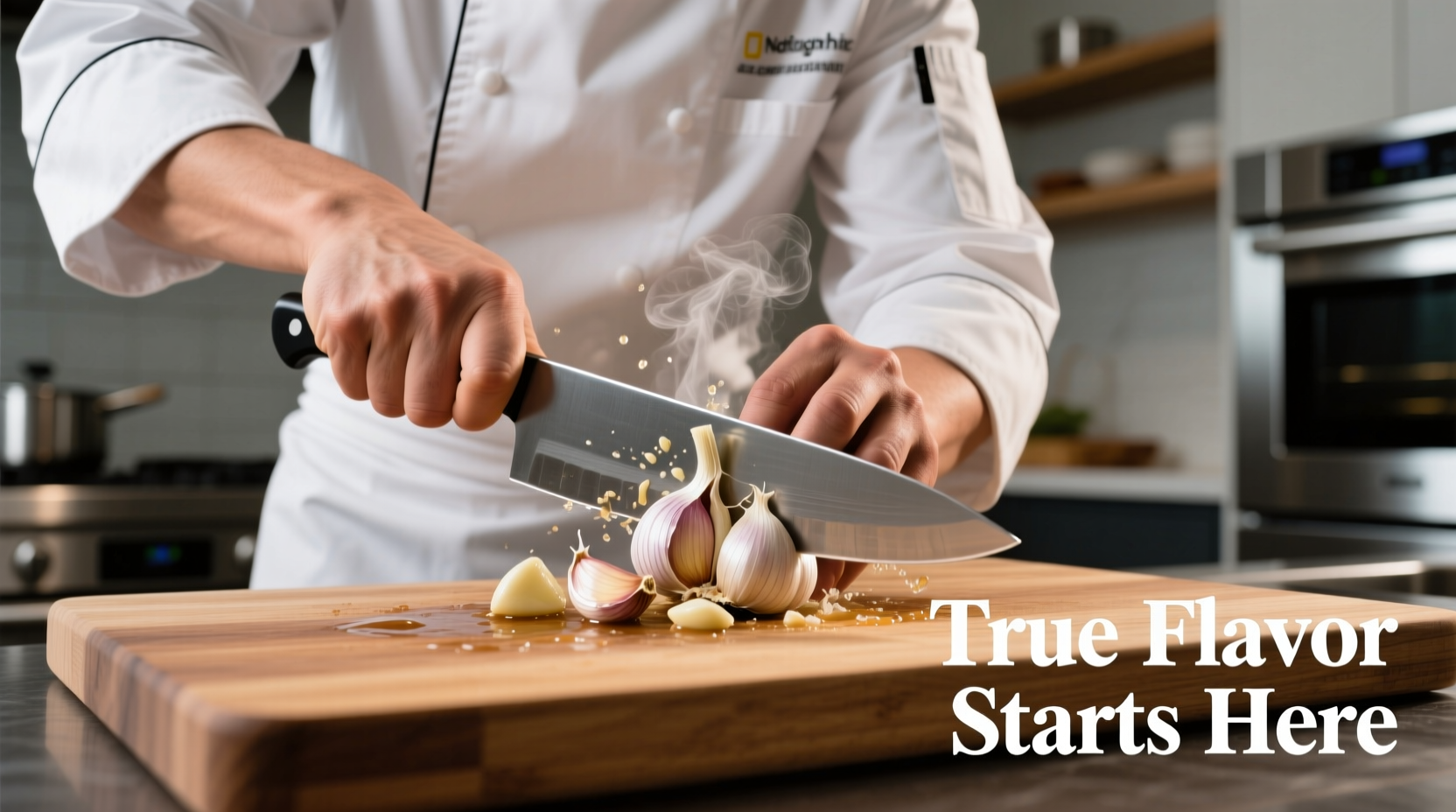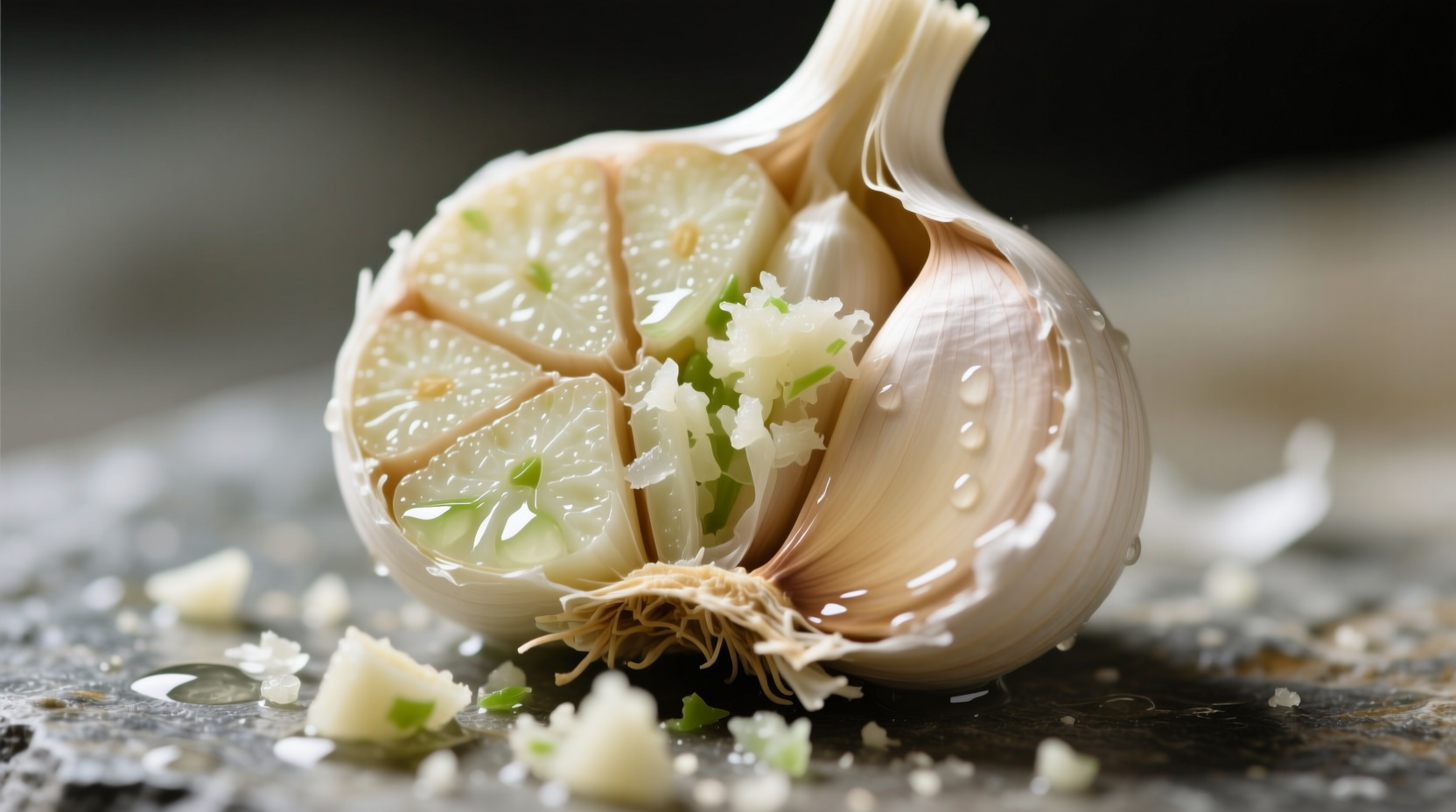The Science Behind Crushed Garlic's Superior Flavor
When you crush garlic cloves, you rupture more cellular structures than with chopping or slicing, triggering a chemical reaction that produces allicin. This sulfur-containing compound forms within seconds of cell damage and is responsible for garlic's distinctive flavor, aroma, and many health benefits. According to research from the National Center for Complementary and Integrative Health, allicin formation peaks at approximately 60-90 seconds after crushing.

Crushed vs. Other Garlic Preparations: Key Differences
| Preparation Method | Cell Damage | Allicin Production | Flavor Profile | Best For |
|---|---|---|---|---|
| Crushed | Complete cell rupture | Maximum (peaks at 60-90s) | Deep, complex, mellow when cooked | Sauces, marinades, dressings |
| Minced | Moderate cell damage | Moderate | Sharper, more immediate bite | Stir-fries, quick sautés |
| Sliced | Minimal cell damage | Low | Subtle, gradual flavor release | Roasting, braising, infusions |
| Whole | No cell damage | None | Mild, sweet when cooked | Stocks, slow cooking |
Professional Crushing Techniques for Maximum Flavor
Professional chefs use specific methods to extract optimal flavor from garlic. The traditional French technique involves placing peeled cloves under a chef's knife blade, applying firm pressure with the palm, then rocking the knife to create a paste-like consistency. This method releases more flavor compounds than garlic presses, which can create bitter notes by forcing out harsher compounds.
For best results, follow these steps:
- Peel garlic cloves (try the shake-in-container method for easy peeling)
- Place flat side of chef's knife on clove
- Apply firm downward pressure with palm
- Rock knife gently to form paste
- Let crushed garlic rest for 60-90 seconds before cooking
Timing Matters: The Allicin Development Timeline
Understanding the chemical timeline after crushing dramatically impacts your cooking results:
- 0-10 seconds: Initial cell rupture begins allicin formation
- 30-60 seconds: Flavor compounds developing, but not yet optimal
- 60-90 seconds: Peak allicin concentration for maximum flavor and health benefits
- 2+ minutes: Flavor begins to mellow as compounds transform
- 10+ minutes: Flavor becomes more integrated but less pronounced
Research from the National Institutes of Health confirms that allowing crushed garlic to rest before cooking preserves more beneficial compounds that would otherwise evaporate during immediate heating.
When Crushed Garlic Works Best (and When It Doesn't)
Crushed garlic excels in applications where you want deep, integrated flavor rather than sharp garlic notes. It's ideal for:
- Tomato-based sauces where flavor needs to meld during simmering
- Marinades that penetrate proteins
- Vinaigrettes and emulsified dressings
- Slow-cooked dishes like braises and stews
Avoid using crushed garlic when you want distinct garlic pieces or sharp flavor notes, such as in:
- Stir-fries requiring quick cooking
- Dishes where visual presentation of garlic matters
- Raw applications where intense garlic flavor would dominate
Storage Solutions for Crushed Garlic
Once crushed, garlic begins losing flavor compounds rapidly. For best results:
- Use immediately for peak flavor
- Store in airtight container with olive oil for up to 3 days
- Freeze in ice cube trays with oil for longer storage
- Never store crushed garlic at room temperature for extended periods
The U.S. Food and Drug Administration warns that garlic-in-oil mixtures can create conditions favorable for botulism if not properly stored. Always refrigerate and use within 3 days, or freeze for longer storage.
Recipe Integration Tips
For optimal results in your cooking:
- Add crushed garlic to cold oil, then heat gradually to prevent burning
- Combine with salt immediately after crushing to stabilize flavor compounds
- Use 1:1.5 ratio when substituting crushed for minced garlic (crushed is more potent)
- For roasted garlic flavor without roasting, let crushed garlic rest 10 minutes before cooking











 浙公网安备
33010002000092号
浙公网安备
33010002000092号 浙B2-20120091-4
浙B2-20120091-4